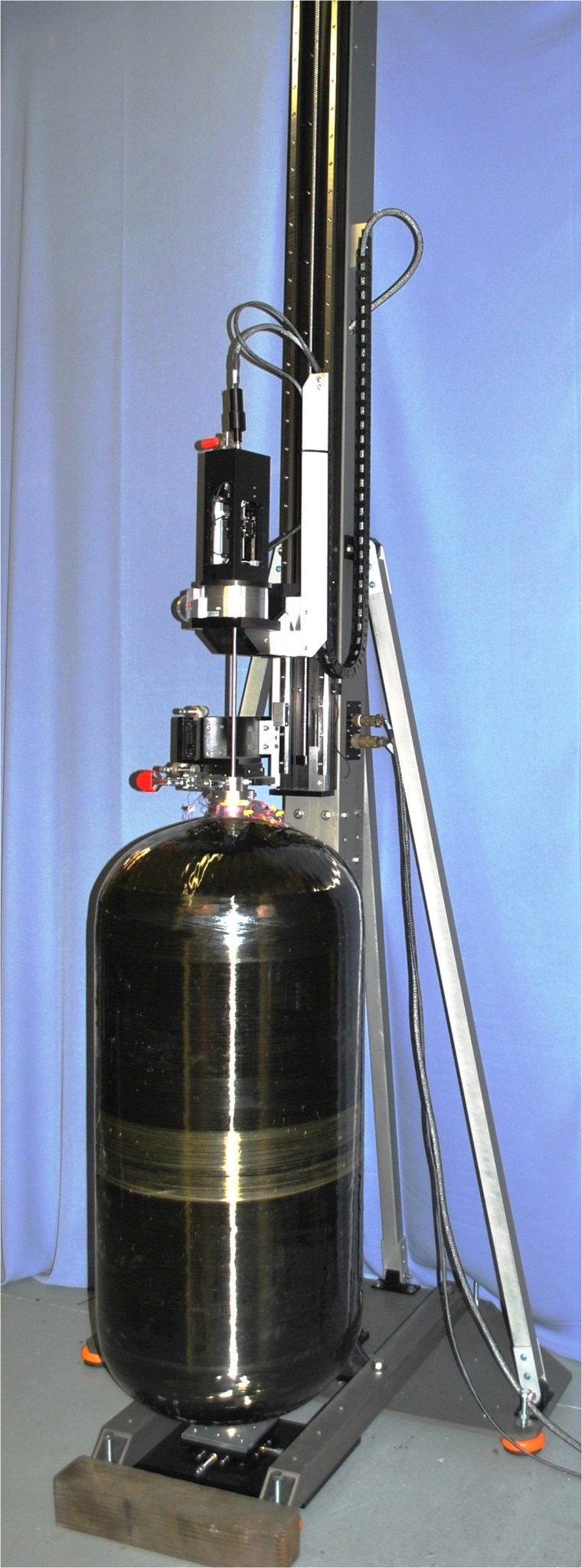Composite pressure vessels (CPVs) are used widely in spacecraft and other applications to obtain significant weight savings over metal pressure vessels. However, CPV variability has continued to be relatively high even though significant effort has been placed on ensuring manufacturing consistency. Additionally, there are concerns that liner flaws may go undetected, causing failure after being pressure cycled in service. Most manufacturers currently use fluorescent dye penetrant for liner flaw detection and borescopes for interior visual inspections. However, these methods are subject to human error and are not as quantitative as desired, making additional development of nondestructive testing methods desirable.
While the NASA Nondestructive Working Group started development of internal profilometers for CPV evaluation, the NESC Composite Pressure Vessel Working Group soon joined as a partner to gain analytical capabilities necessary to evaluate the mechanical response of CPVs. The WSTF has managed the project and handled testing, while the scanning hardware development was contracted to Laser Techniques Company, Redmond, Washington. A scanning station was first developed with a rotating interior sensor probe that accurately mapped and measured the interior cylindrical profile. The scanning station was later modified to also provide external profilometry plus eddy current (EC) scanning capabilities.
To perform external profilometry and EC scanning, the rotating interior sensor probe is easily removed and replaced with offset external sensors and a rotational stage spins the CPV (as seen in photo, above). An articulated probe and delivery system was also developed to allow CPVs with ellipsoid ends to be scanned from port to port, as developed first for the Orion service module CPVs (as seen in photo, right) and then the International Space Station (ISS) nitrogen oxygen recharge system (NORS) CPVs. System radial accuracy varies between approximately +/- 0.001 to 0.002 inch, depending on the port size and other restrictions. This allows pits, bulges, distortion, and the amplitude and periodicity of anomalies to be evaluated and then imaged with “laser vision.” The EC system easily detects exterior cracks and defects ~0.001- inch deep on the surface of aluminum liners and sensors have been developed for evaluation of internal cracks and crack detection through the composite material. The flaw detection through the composite is greatly degraded, but sensitivity is to be quantified for various applications (involving JPL and LaRC). The NESC will also supply liners with fatigue cracks to help quantify the flaw detection capability.
The system has been used for CPV applications at WSTF and at CPV supplier facilities. It was used at a supplier facility to incrementally evaluate mechanical response as the liners were wrapped and then autofrettaged in support of ISS stress rupture testing. The system was also used in the NESC study that characterized the response of aluminum lined T1000 and IM7 carbon vessels to autofrettage and a new NORS system has been delivered to characterize their CPVs as a part of developmental testing.
For more information, contact Regor Saulsberry (regor.l.saulsberry@nasa.gov)


























